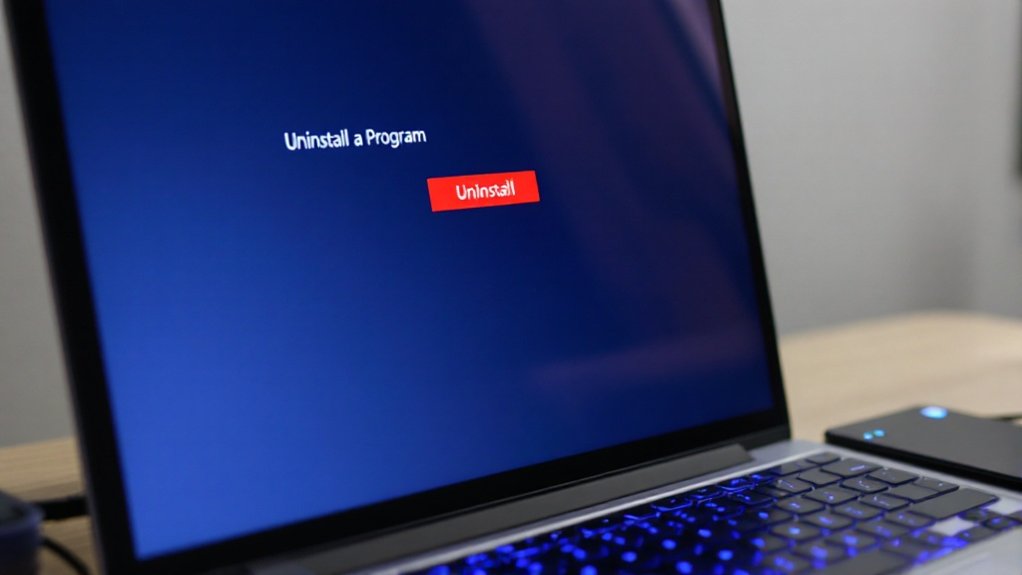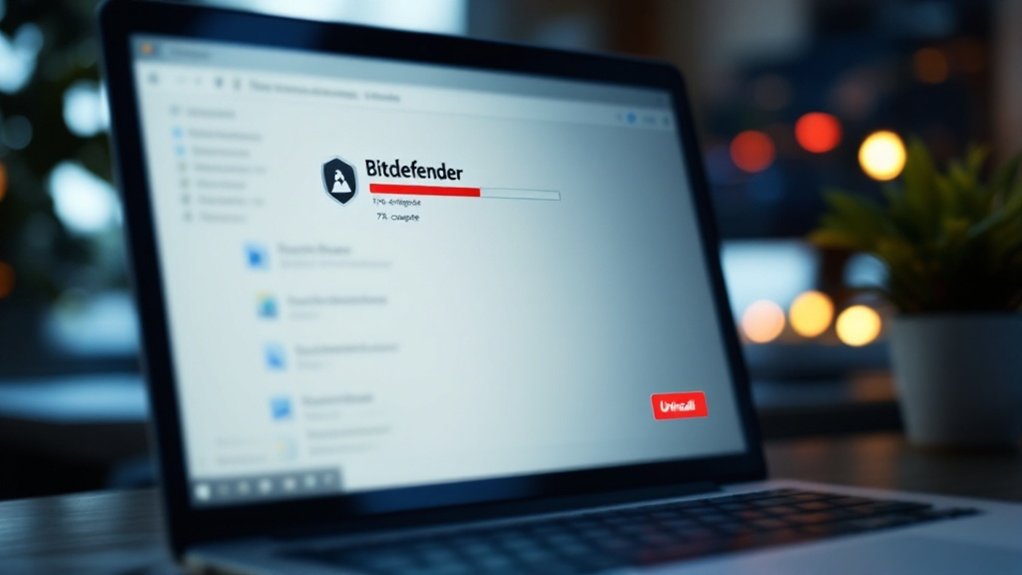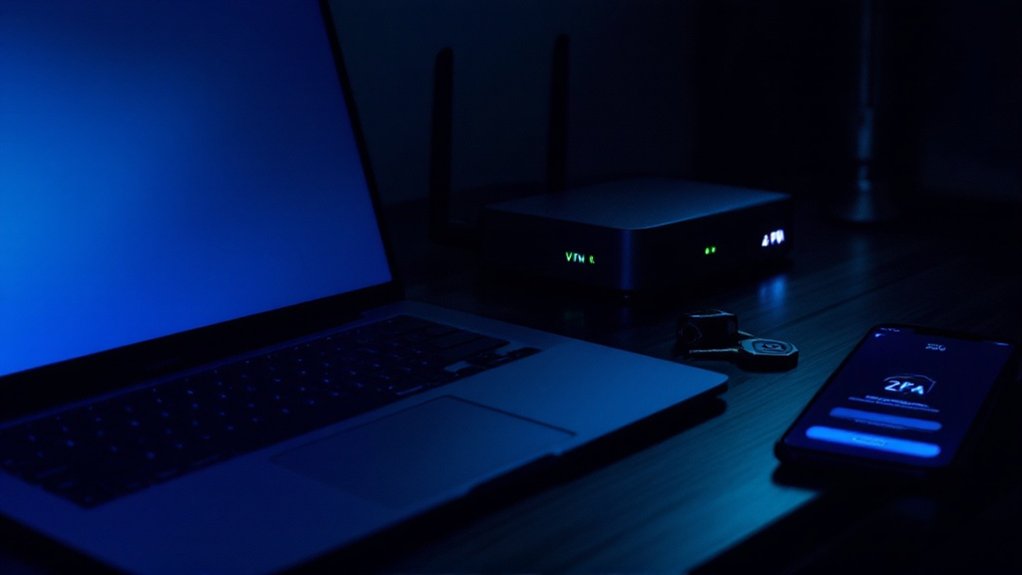Uninstalling Bitdefender requires accessing Windows Control Panel or Settings, locating the program, and initiating the standard removal process. Users must follow on-screen prompts, verify all components are selected for removal, and perform a mandatory system restart afterward. For thorough removal, Bitdefender’s official Uninstall Tool can eliminate registry entries and associated files when standard methods prove insufficient. The complete process involves several critical steps that maintain ideal system security during change.

Steering through the process of uninstalling Bitdefender requires careful attention to detail, as the security software integrates deeply within operating systems to provide all-encompassing protection. Users can employ several methods to remove the software, with the standard uninstallation process through Windows Control Panel or Settings serving as the primary approach for most situations. After removing Bitdefender through Control Panel, restarting the computer is essential for completing the process.
Before initiating the uninstallation process, users should back up important data and make certain they have an alternative security solution ready for installation. The standard removal process involves accessing the Control Panel, locating Bitdefender in the installed programs list, and following the on-screen prompts to complete the uninstallation, followed by a system restart to finalize the changes. Choosing a replacement antivirus with real-time protection capabilities ensures continued defense against emerging cyber threats.
For situations where the standard uninstallation proves insufficient, Bitdefender provides an official Uninstall Tool that can thoroughly remove all components. This tool, when run with administrative privileges, systematically eliminates all traces of the software from the system, including registry entries and associated files. The MAV-BD Uninstall Tool must be obtained through the N-ablesupport team by creating a support case.
Mac users follow a different protocol, accessing the Bitdefender folder through Finder and running the dedicated uninstaller application. The process requires administrator credentials and concludes with a system restart to make certain complete removal of all components.
If complications arise during the uninstallation process, users can employ several troubleshooting methods. These include booting into Safe Mode, utilizing third-party uninstaller software, or disabling Bitdefender’s Self-Protection module.
Particularly stubborn installations may require manual removal, which involves ending all Bitdefender processes through Task Manager and manually deleting associated folders and registry entries.
Post-uninstallation verification is vital to make certain complete removal. Users should check for remaining Bitdefender files in Program Files and ProgramData folders, remove any lingering startup entries, and clear browser caches.
The final step involves installing a new antivirus solution to maintain system security, as operating without protection leaves systems vulnerable to various cyber threats.
Frequently Asked Questions
Will Uninstalling Bitdefender Remove All My Saved Passwords and Settings?
Uninstalling Bitdefender does not typically remove saved passwords or personal settings.
As the antivirus software itself is removed, passwords stored in Bitdefender Wallet remain accessible through the Bitdefender Central account online.
Custom configurations, scan settings, and user preferences are preserved, though scan history and quarantined files may be deleted.
Users can access their saved data post-uninstallation through the web interface or upon reinstallation of the software.
Can I Reinstall Bitdefender After Uninstalling It Using the Same License Key?
Users can reinstall Bitdefender using their existing license key, as the same key remains valid until its original expiration date.
The license automatically deactivates from the previous installation during reinstallation, allowing for a seamless shift.
Multiple reinstallations are permitted within the active license period, provided users follow proper uninstallation procedures and use Bitdefender’s removal tool for thorough cleanup before proceeding with the new installation.
Does Uninstalling Bitdefender Affect Other Antivirus Programs on My Computer?
Uninstalling Bitdefender does not directly impact other antivirus programs installed on a computer system, as it is designed to coexist with other security software.
Nevertheless, temporary deactivation of other antivirus programs during Bitdefender’s removal process is recommended to avoid potential conflicts.
After uninstallation, previously installed antivirus software remains intact, though manual reactivation may be necessary, and Windows Defender will automatically resume if no other protection is detected.
Will My Computer Be Protected During the Bitdefender Uninstallation Process?
Computer systems maintain protection during Bitdefender’s uninstallation process through multiple security layers.
Bitdefender continues real-time scanning and firewall protection until the final removal step, whereas Windows Defender automatically activates post-removal to guarantee continuous coverage.
Nonetheless, a brief vulnerability window exists during system restart, making it advisable to disconnect from the internet and perform the uninstallation during low-risk periods.
Should I Restart My Computer Before Installing a Different Antivirus Program?
Restarting a computer before installing a new antivirus program is crucial for system stability and peak performance.
The restart process clears system memory, removes residual files from the previous antivirus software, and prevents potential conflicts between security programs.
Industry experts recommend this critical step to guarantee proper initialization of system drivers and services, during the creation of an optimal environment for the new antivirus installation to function correctly.









